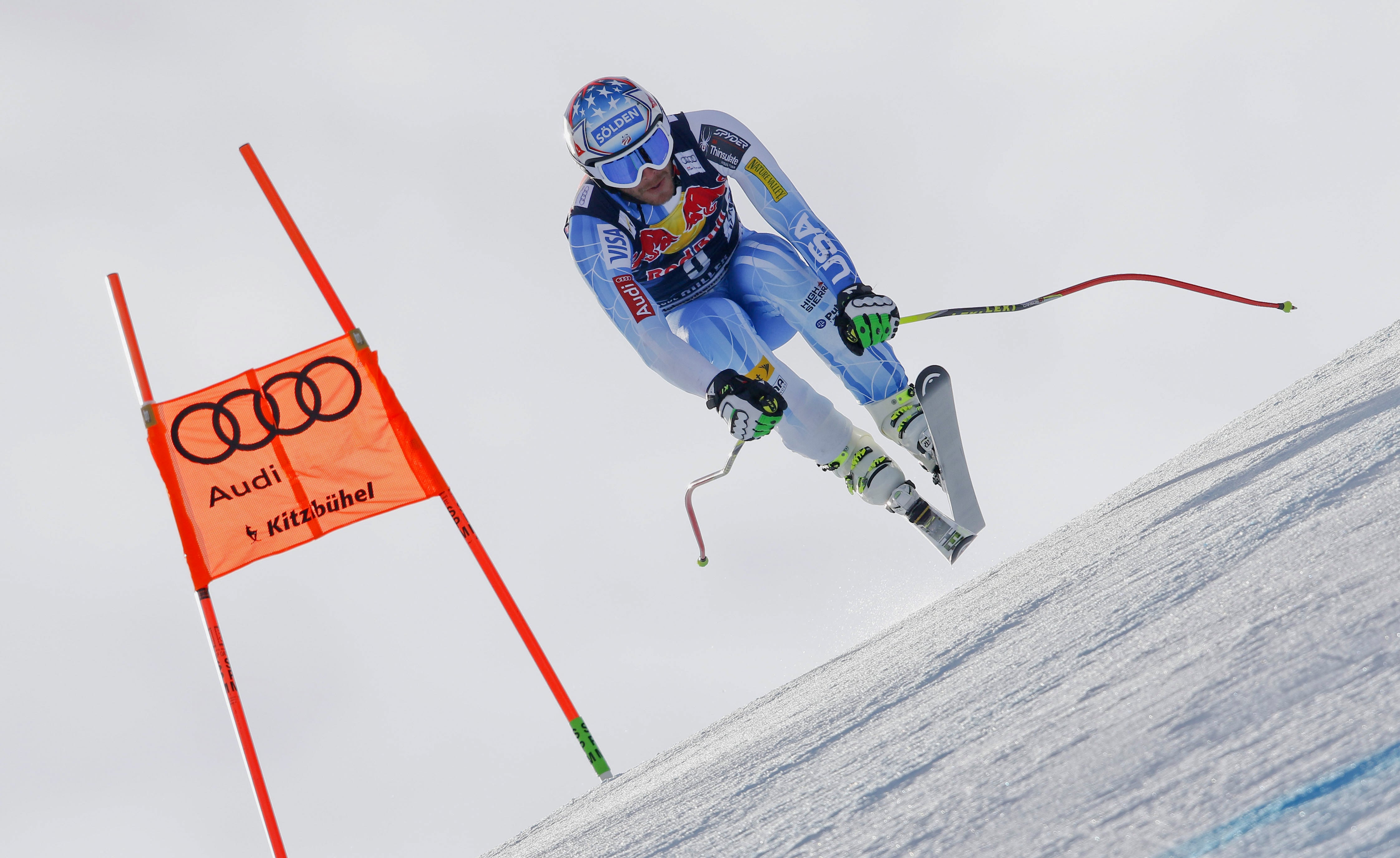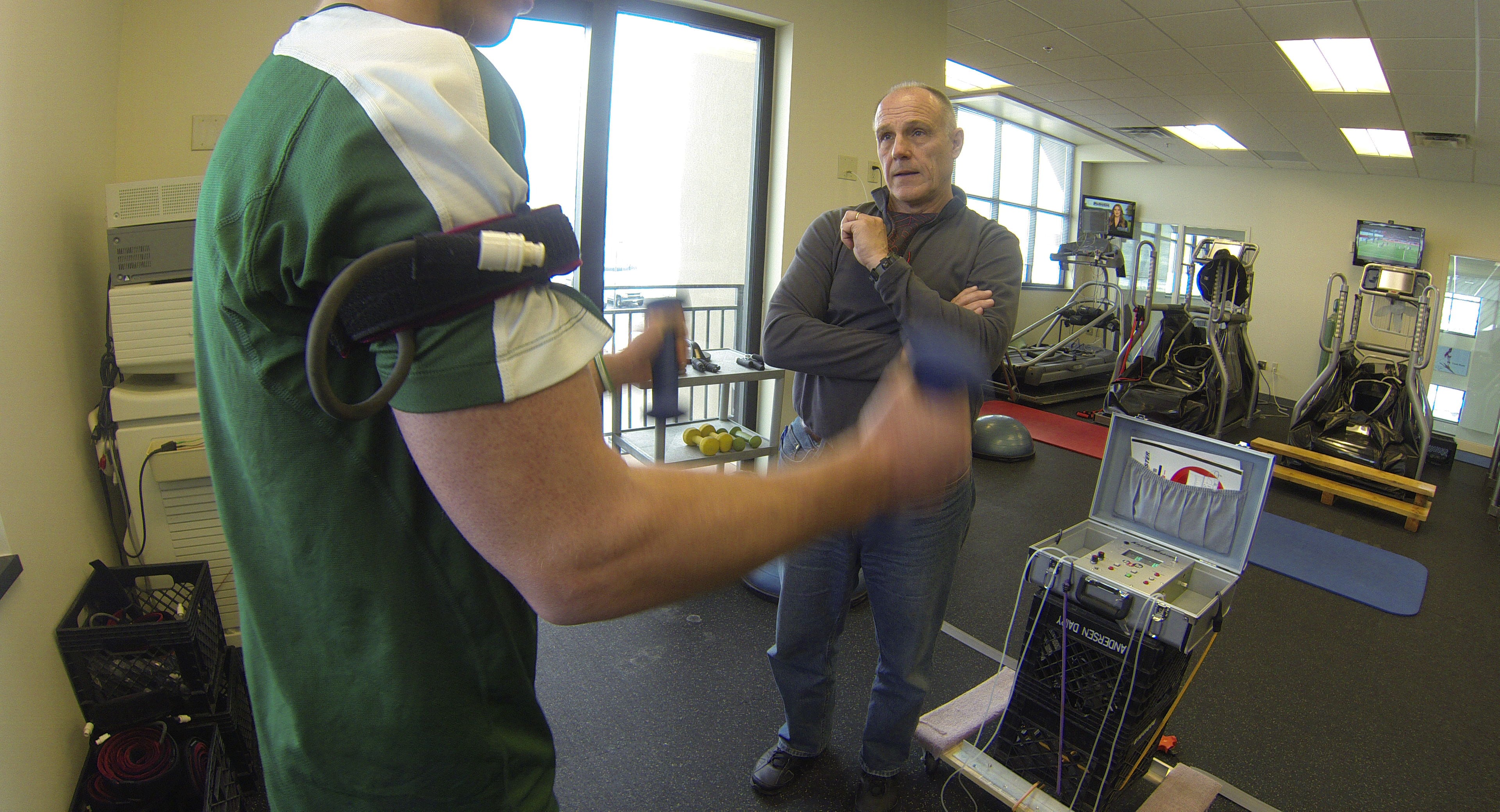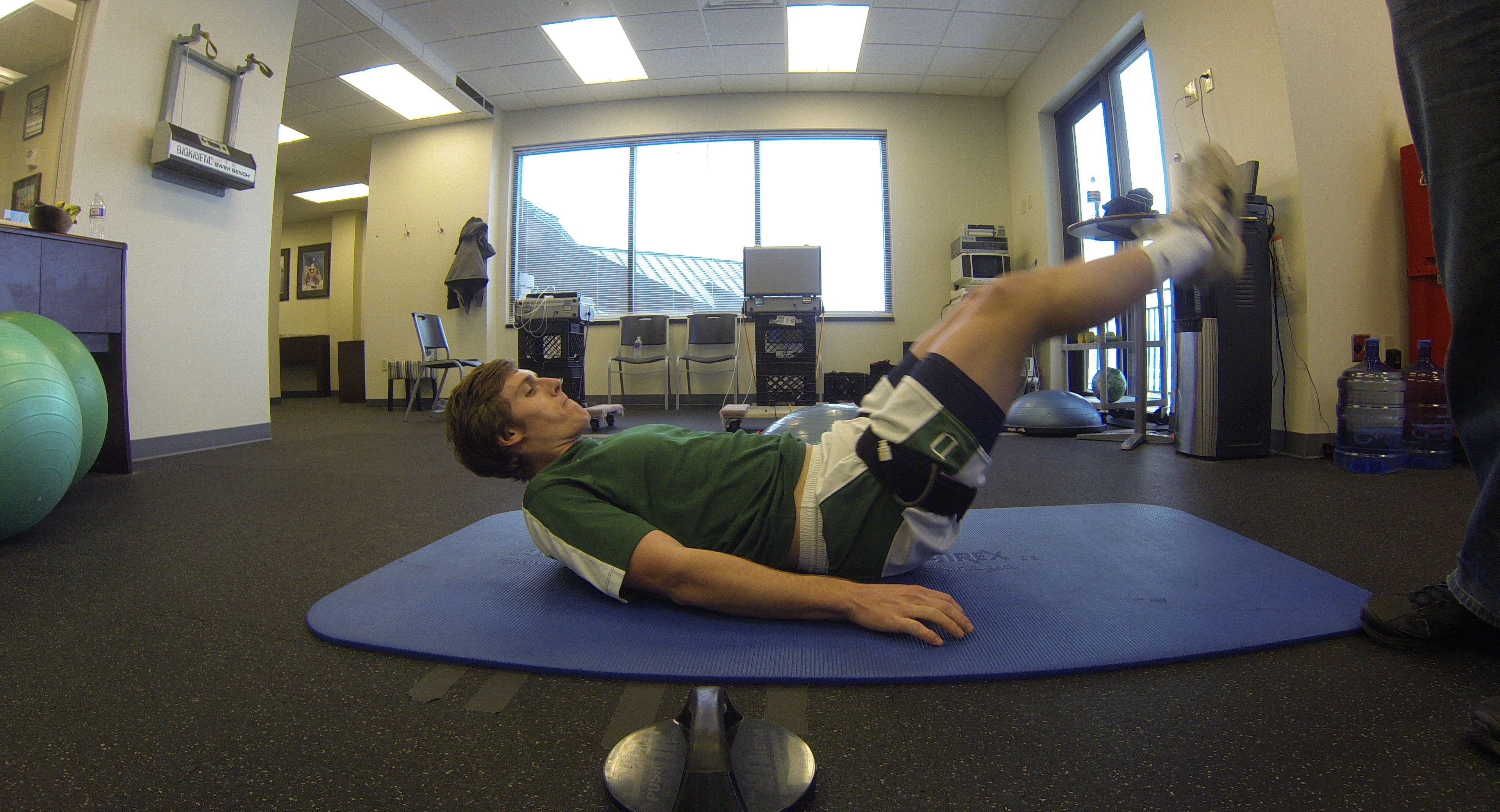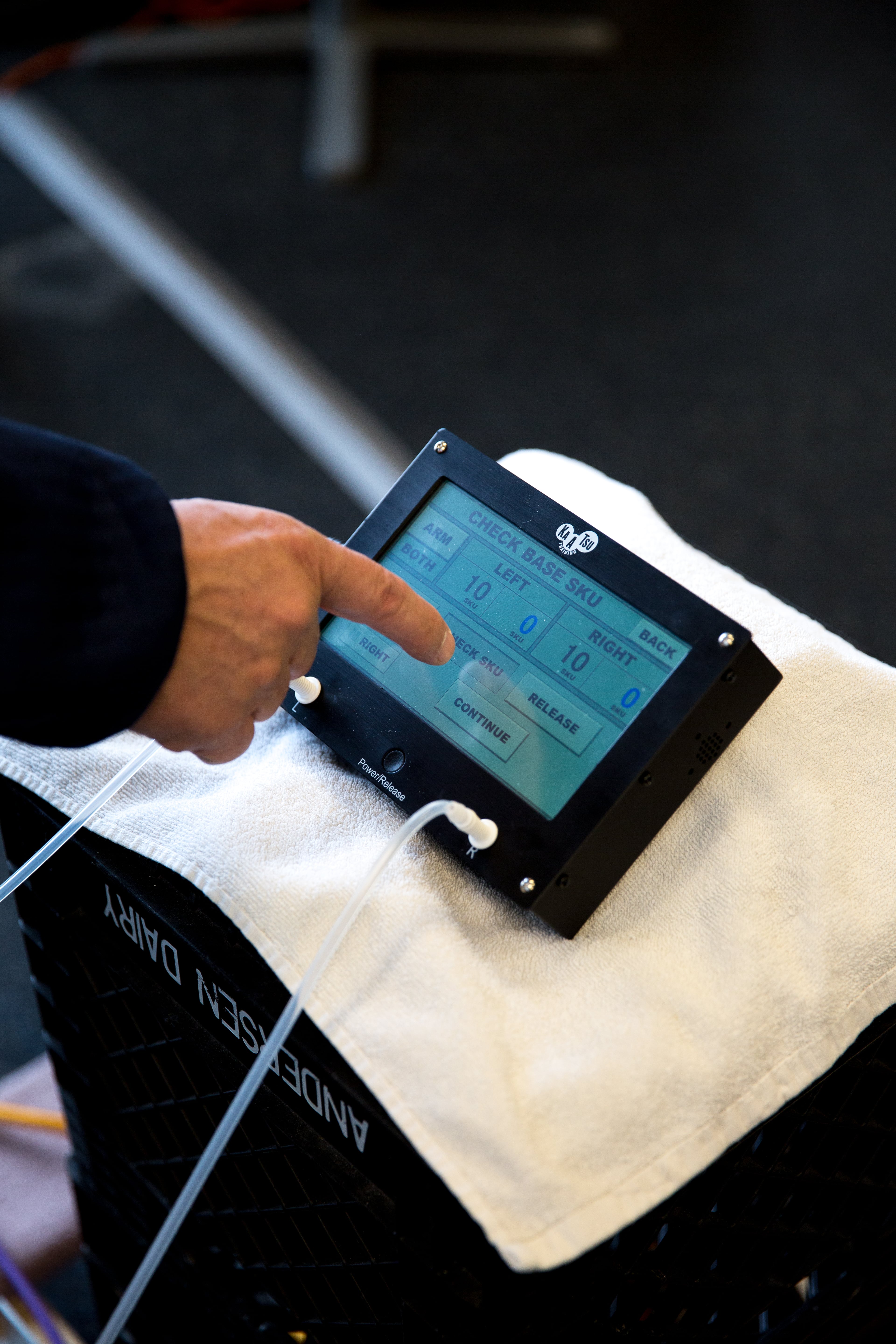And now you must set that aside for a few minutes to consider this:
What if you could get a total-body, muscles-maxed workout, the kind that usually takes hours under heavy, sweat-soaked weights or pounding miles of road and trail, all in less than 30 minutes?
Better yet, what if — after that kind of workout — not only do you not feel any of the typical soreness that comes with pushing your body to total muscle failure, but you're ready to do it again within just a few hours?
And what if you could get that workout with just a few basic body-weight exercises and minimal weights?
Best of all, what if that workout not only adds solid, lean muscle mass, but also significantly increases strength and endurance, while reducing body fat?
All within just a few weeks?
That's the promise of a revolutionary new training system just coming over from Japan dubbed Kaatsu.
"It really does sound too good to be true," says former Army physician Dr. Brian Law. "That's exactly what I thought."
But Law recently tried Kaatsu for less than two weeks. And he's already a believer.
"I work out a lot. I normally bench press 350 pounds," says Law, now a researcher at Ohio University. "After 10 days of doing Kaatsu for only about 10 minutes a day, I added 10 pounds to my max bench press — without even using a spotter. All the hours I've spent in the gym and, wow, these kind of results after only 10 minutes. It's pretty cool."
So cool that Law is among a team of researchers preparing to launch a major two-year study exploring the possibilities of Kaatsu.
He isn't the only one downright excited about what he's already experienced.

U.S. ski champ Bode Miller used Kaatsu during a long recovery from injury.
Photo Credit: Andy Kropa /Invision/AP
"I've been getting a top-to-bottom workout with just Kaatsu alone. That's a testament to its effectiveness in terms of not just building size, but building functional effectiveness," Miller says.
"I think it's also going to be the most widely beneficial [training method] — good for people from 12 years old to 80 and from elite athletes and law enforcement and military to stay-at-home moms and dads. There's an application for every human on the planet with this."

Bode Miller takes a jump during training for the men's World Cup downhill in Kitzbuehel, Austria, on Jan. 22.
Photo Credit: Shinichiro Tanaka/AP
Meanwhile, in recent months top performance trainers for U.S. Special Operations Command have started trials using Kaatsu and are introducing the training to key leaders and operators.
So what is this miracle workout?
Pressure cooker
While just emerging in the U.S., Kaatsu has been around for years overseas.
In fact, it's been the secret weapon of elite Japanese athletes for decades, used by everyone from pro baseball players and golfers to sumo wrestlers and martial artists.
A mashup of the Japanese words for "additional" — ka — and "pressure" — atsu — the system puts thin, computer-controlled, pressurized bands around your upper arms and legs to reduce the amount of blood flowing back from the muscles in your extremities.
Think blood pressure cuffs, but thinner, and detachable once inflated to the correct level.

Dr. Jim Stray-Gundersen works with an athlete at the U.S. Ski Team headquarters in Park City, Utah, using a revolutionary new training device developed in Japan dubbed Kaatsu.
Photo Credit: Jon R. Anderson/Staff
By slowing down the blood flow back to the heart, your limbs become engorged in blood, filling normally unused capillaries and mobilizing muscle fibers, while also raising the concentration of lactic acid in the blood — basically what happens during prolonged exercise.
Do just a little actual exercise, and the brain is essentially tricked into thinking the body is undergoing a massive workout and triggers the pituitary gland to pump out growth hormones.
"With very light exercise in a very short amount of time, you get an exhaustive workout that sends a signal to your brain that says, 'Hey, I've done something really hard here — you better help me recover and adapt to it.' The brain then sends out a signal for a hormonal response that causes the muscle to grow and the blood vessels to grow," says Dr. Jim Stray-Gundersen.
"Then on top of that, because there isn't much actual exercise, there's very little muscle fiber damage. Because of that, you just start adapting very fast. You don't have to dig yourself out of a hole."
Stray-Gundersen knows all about digging out of fitness holes. A surgeon and human performance expert, he's the science adviser to the U.S. National Ski Team at Park City, Utah, and has served as the team doctor through six Winter Olympic Games. He also leads performance training for elite athletes and Navy SEALs.
Stray-Gundersen is so enthusiastic about Kaatsu, he has signed on as the chief medical officer to help bring the training system into the U.S.
"I didn't believe it either at first," he says. "But it's hard to argue with the results."
During one informal study with cross-country skiers fighting for spots on the U.S. Olympic team, "we saw a 10 to 12 percent increase in strength after using Kaatsu, compared to what they would have had otherwise. To be able to improve someone who is already strong and already fit by that amount is huge."
Before starting Kaatsu training, Stray-Gundersen put the skiers through a battery of one-minute, rapid-fire calisthenic tests — pushups, situps, pullups, box jumps and dips.
"They all showed a dramatic improvement over just 10 sessions done in the course of five weeks," he says. "Not a lot of people can rip off a pushup a second and keep that pace. Usually, the pace starts to fade. What we saw with Kaatsu is that they were able to just keep that pace going longer."
Military application
Stray-Gundersen thinks the application for the military is massive: "You could imagine every drill instructor using Kaatsu for basic recruits and then higher-level operators who have mastered the techniques doing it on their own as a very quick and efficient way to get their strength training done."
If that sounds like a promise that anyone in the military would see major fitness gains using Kaatsu: "I guarantee it," he says.
While research in the U.S. is just getting started, Kaatsu has already been vetted by scores of peer-reviewed studies in Japan.
"Every study I've read supports that there's all this increase in growth hormones and body chemicals that literally cause the muscles to grow," says Law, the Ohio University researcher.
The two-year study on Kaatsu he's helping put together will explore how Kaatsu improves strength and endurance among 18- to 35-year-olds.
"This is going to be huge in the military," he adds. "Frankly, I'm not sure why it isn't already. ... I have to believe that in the next couple of years this is going to blow up like wildfire."
Indeed, Bode Miller isn't the only member of the U.S. Ski Team to experience firsthand how effective Kaatsu can be for recovering from injuries.
Olympic Nordic combined 2010 silver medalist Todd Lodwick was in the final weeks of preparing for the Sochi Games when he crashed hard during a ski jump, breaking his arm, dislocating his shoulder and tearing a ligament cluster.
Typically, that kind of injury would have required surgery, but that would have scuttled his Olympic bid, so he took his chances recovering with just a cast. And he used Kaatsu to continue his training regimen, Stray-Gundersen says.
Within a month, he was the U.S. flag bearer for the opening ceremonies, going on to help the Nordic relay squad nail down a sixth-place finish in the Games.
Decades in the making
The brainchild of Dr. Yoshiaki Sato, the basic premise of Kaatsu was conceived in 1966. A young athlete at the time, Sato noticed how much his calf muscles hurt after kneeling through long Japanese ceremonies.
He realized the swelling was similar to the pumped-up feeling he got after a vigorous bout of weight training.
It wasn't long before he started experimenting with straps and bicycle tires, says Steve Munatones, a former U.S. Olympic swimming coach who has become Sato's lead evangelist in the U.S.
Today, Sato's patented system is in wide use throughout Japan, but few have even heard of it outside of the country.
"Japanese athletes think of it as their edge, so they don't talk about it much," he says.
Fluent in Japanese, Munatones has spent several years translating Sato's work and procedures and helping get the word out.
"I'm used to the skepticism," says Munatones. "It sounded like a lot of hocus-pocus when I first heard about it," he says. But as soon as he tried it himself, he realized this was no smoke and mirrors. Once he wrapped his head around the mechanics of Kaatsu, he was hooked.
"It's completely changed my view of sports and human performance," he says. "That's the beauty of Kaatsu. Once you understand the physiological processes that are happening, it makes sense. But like any new invention, until someone actually lays it out, no one can see it."

An athlete at the U.S. Ski Team headquarters in Park City, Utah, works out using Kaatsu leg bands.
Photo Credit: Jon R. Anderson/Staff
Aqua Kaatsu
About two years ago, Munatones — an avid swimmer himself — convinced Sato to make a version of Kaatsu bands that could be used in water.
"Swimmers are creatures of habit. I've been doing the same workout — the same number of laps — since I graduated from college." Now 52, he'd been painfully aware of the increasing time it took to finish that workout.
"The pace, intervals, number of strokes — everything was getting slower. I knew this was the natural outcome of aging."
Once he started using Sato's new aqua bands, that natural decline began a remarkable reversal. Within 14 months, he had shaved 15 percent off his already impressive 200-yard butterfly time, dropping it to 2 minutes, 7 seconds. "I'm as fast now as I was in my late 20s," he says.
Munatones says he's eager to see what the military does with Kaatsu.
Early interest from SOCOM
While the Kaatsu gear and training are only just becoming publicly available, the U.S. military has been among the first in line to begin working with it.
"It's the real deal," says one top official with Exos, a fitness and performance company that staffs a broad swath of special-operations units with exercise physiologists, strength and conditioning coaches and other experts. "It's controversial, because a lot of people just don't believe it can work — but this stuff is legit."
U.S. Special Operations Command bought 10 Kaatsu systems just a few months ago. In late January, Munatones traveled to the command's headquarters in Tampa, Florida, to train one of SOCOM's top human performance experts — also a top Navy SEAL — on how to use the water version of Kaatsu gear.
For now, the command is keeping any official comment on Kaatsu to a minimum.
"We are conducting a limited trial. It's too early to tell anything about it in terms of the results we're seeing," says a spokesperson for the command.
Meanwhile, however, about two dozen special operations leaders — from SEAL units to the Army's Ranger Regiment — were given a hands-on introduction to Kaatsu during a recent gathering at Pearl Harbor, Hawaii.
"Our understanding is that everybody loved it," Stray-Gundersen says.

By slowing down the blood flow back to the heart, your limbs become engorged in blood, filling normally unused capillaries and mobilizing muscle fibers, while also raising the concentration of lactic acid in the blood — basically what happens during prolonged exercise.
Photo Credit: Courtesy of Jim Stray-Gundersen
Kaatsu is safe and effective — but only when used properly, advocates caution.
That's why the company requires certification for anyone buying the gear.
And none of it is cheap:
- Online certification course ($1,000): Designed to train Kaatsu providers and users on proper use of Kaatsu gear.
- Master Unit ($4,000): With robust air pumps, intended for multiple users in a gym or Kaatsu studio. Air Bands are inflated and then disconnected. Used with standard electrical outlets or on a rechargeable battery. Memory capacity for multiple clients and multiple certified specialists.
- Nano Unit ($1,200): An auxiliary lightweight device intended for one person at a time who remains connected to the Nano while exercising. Designed for outdoor use and travels easily. Rechargeable battery, limited memory capability.
- Air Bands ($298): One set containing two arm bands and two leg bands.
- Aqua Bands ($189): One set containing two arm bands and two leg bands, intended for use in water.
"If you do it correctly, it's perfectly safe. But if you the leave bands on for a very long time, or lift very heavy weights, you can damage your muscle, or get blood clots and other things that are frankly not very good at all," says Stray-Gundersen, chief medical officer for Kaatsu USA. He says the company is set to begin selling the workout gear to the general public in the U.S. very soon.





